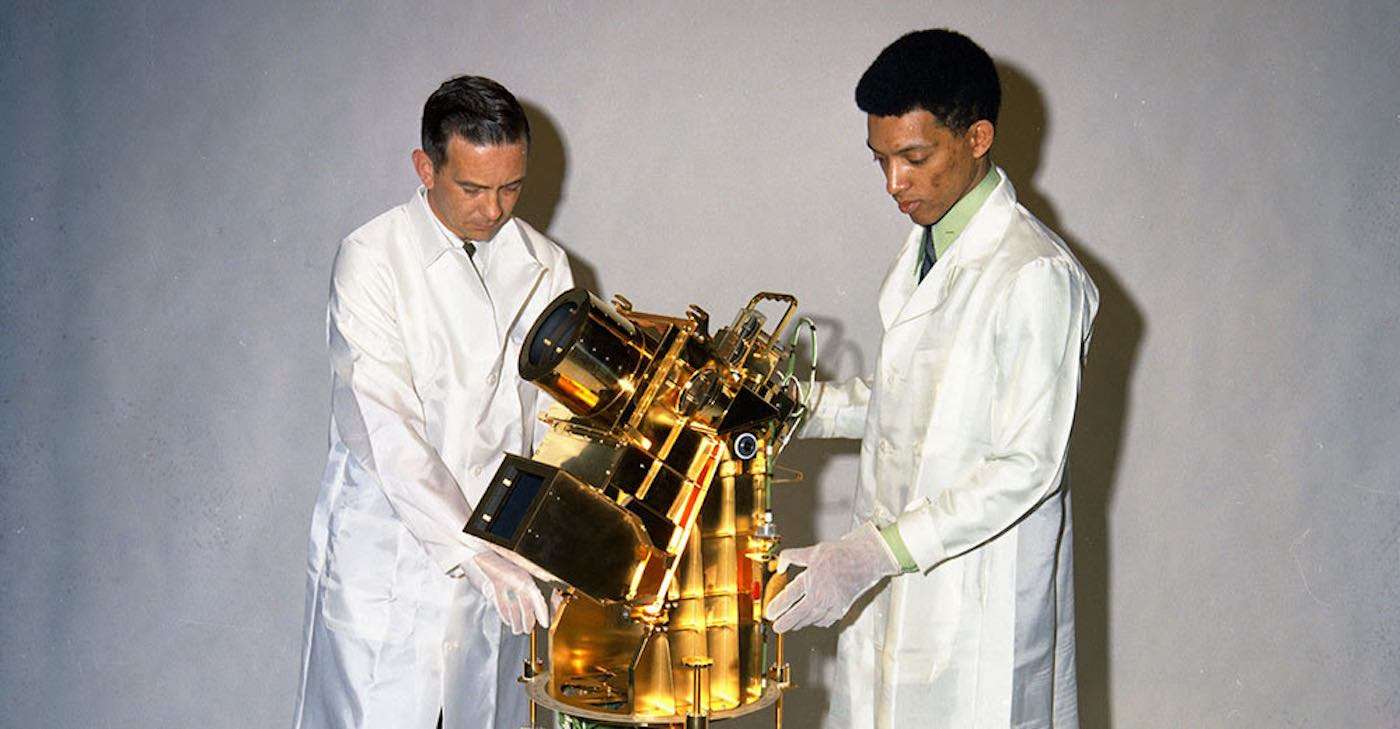Biodegradable Food Wrap Created From Algae and Cinnamon Compound is the Packaging Solution We Needed
Scientists have created edible food wrap made from algae and cinnamon compounds for packaging produce, bakery, poultry, meat, and seafood.

George Robert Carruthers did big things with his life: One of the first Black astrophysicists at NASA, he's known for pioneering the first ultraviolet telescope that went to the Moon.
Midway through Black History Month, it's worth taking a look at this inspirational man who passed away, aged 81, in December 2020.
Winning a basket-full of prestigious awards for his genius breakthroughs—including an induction into the National Inventors Hall of Fame from President Barack Obama in 2013—Carruthers is well-known in science circles for proving the existence of molecular hydrogen content within the emptiness of interstellar medium in 1970—a major conundrum at the time.
Growing up in Cincinnati in the 1940s, Carruthers loved science-fiction books such as the Colliers' series on spaceflight. He was also a big fan of Buck Rogers comics. It was, perhaps, these early interests that led him into the fields of science and engineering despite largely failing the two subjects—as well as math—in school.
Grades may not always have been his strong point, but Carruthers was a bright boy: At the age of ten he was already building his own telescope from cardboard tubing and lenses, items he bought from money he earned as a delivery boy.
When Carruthers' father died aged 12, the family moved to South Side of Chicago. There, Carruthers flourished: winning three child science fair awards and graduating high school in 1957.
Despite early difficulties at school, Carruthers did well at the University of Illinois, earning a bachelor's degree in physics in 1961, a master's in nuclear engineering in 1962, and his Ph.D. in aeronautical and astronautical engineering in 1964.
After gaining his doctorate, Caruthers joined the U.S. Naval Research Laboratory in Washington D.C. as a National Science Foundation postdoctoral fellow. One of the first Black astrophysicists, it was here that he would help create a groundbreaking apprenticeship for young scientists and engineers called the Science and Engineering Apprenticeship Program, which still helps steer young minds towards their dreams today.
Five years later, he perfected an image converter for electromagnetic radiation which NASA sent up in a rocket in 1970. Along with a UV image of Halley's Comet, it captured the first evidence, and upper limits of, molecular hydrogen in interstellar media—solving a piece of the still-researched "missing mass" problem which today focuses around dark matter.
In 1972, a similar and more advanced version of the image converter—called a far-ultraviolet camera/spectrograph—was brought to the Moon by Apollo 16 astronauts. With this, the first images of Earth in ultraviolet light were taken. The device remains on the Moon's surface, in the Descartes highland region, today.
A shy man who came to life while discussing his chosen field, when asked to explain highlights of the instrument's findings for a general audience, Dr. Carruthers put it beautifully, saying, "the most immediately obvious and spectacular results were really for the Earth observations, because this was the first time that the Earth had been photographed from a distance in ultraviolet (UV) light, so that you could see the full extent of the hydrogen atmosphere, the polar auroris and what we call the tropical airglow belt."
With the spectrograph, astronauts could see how Earth's atmosphere looked in terms of concentrations of pollutants, and take UV images of more than 550 stars, local nebulae, and far-off galaxies. Carruthers was awarded NASA's Exceptional Scientific Achievement Medal for his work on the project.
Growing up in an era in which African-Americans faced huge oppression, Dr. George Carruthers nevertheless followed a love of science-fiction into a decorated career in ‘science-fact', and is fondly remembered by NASA, the Navy, and the world for his pioneering contributions to science.
(WATCH the short biography of Carruthers' life from Channel E below…)
SHARE the Story of An Extraordinary Life With Friends on Social Media…
Be the first to comment